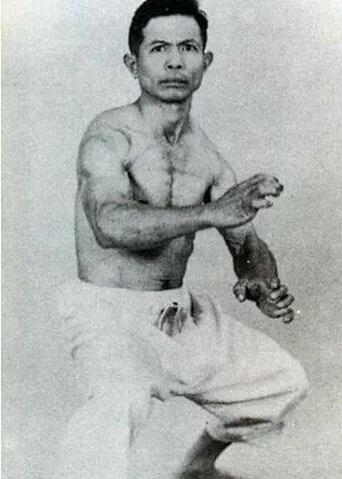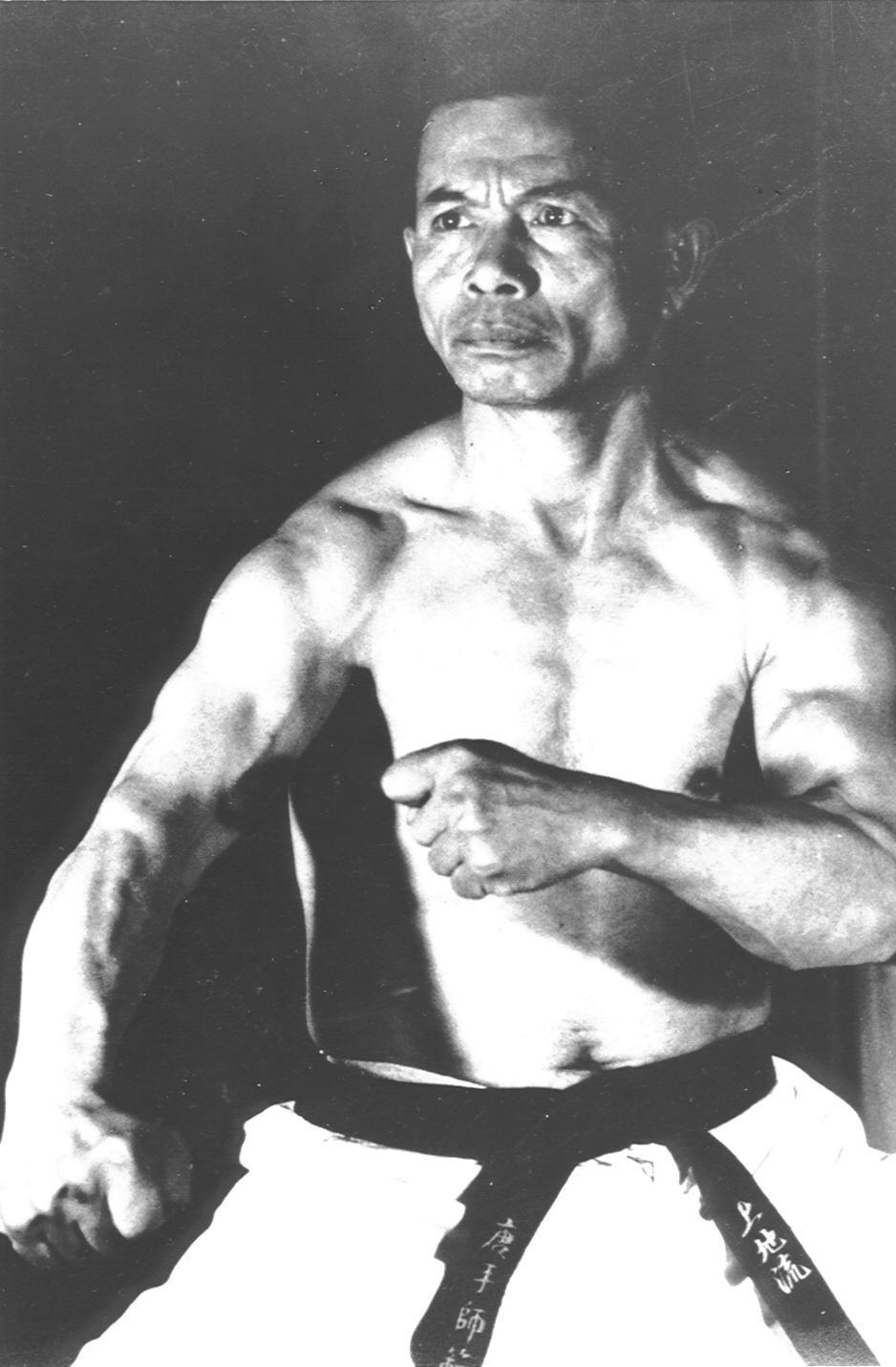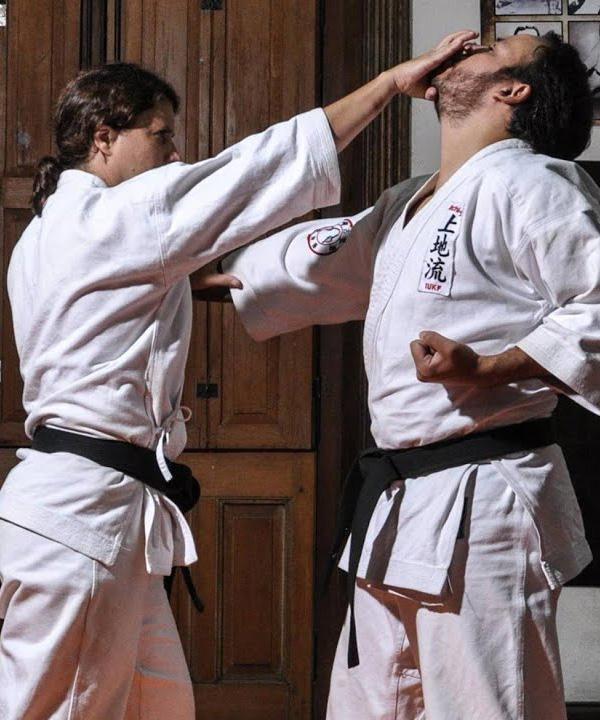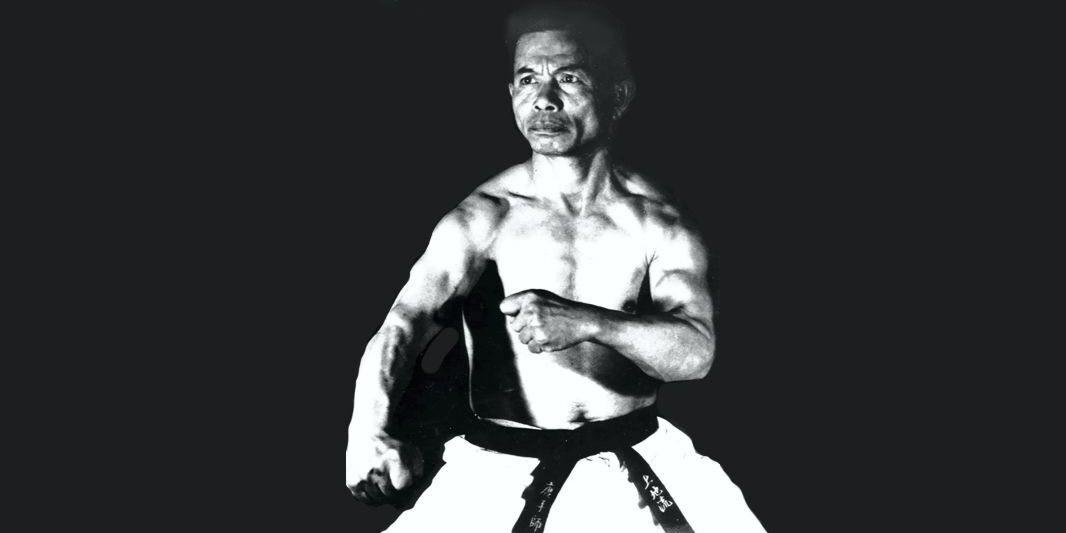
5 minute read
TACHI KATA IN UECHI RYU SENSEI Cecilia Salbuchi
The heart of Uechi Ryu is Sanchin (“Three Conflicts”), and from there it takes its base, its guard, its body posture and basic precepts to strike, among other things. So Uechi Ryu will use Sanchin Dachi 95% of the time, or more! The Sanchin position seeks to grant maximum balance, and the maximum attack and defense capacity with any limb. Hence his tremendous body frontality, he wants the practitioner to be able to comfortably develop techniques from both flanks equally. But... if Sanchin Dachi is such a perfect, balanced and stable position, why are there other positions in the style? And that is the question that we are going to try to answer in this space today. Whenever we are going to talk about applications, we must remember that the kata seeks to incorporate principles that we must later apply in kumite. These principles during the execution of kata are covered with an aesthetic that possibly ceases to exist in kumite. A real combat is always messy. If we analyze the forms of Uechi Ryu, we will see that a few bases appear in addition to Sanchin Dachi within the combat structure of the form, always omitting the greeting position (musubi dachi). The first different position that appears is Heiko Dachi (parallel feet stance) which is used only when starting or ending a form. Generally, a formulated kamae already appears here, and it complies with the idea of allowing action with either flank comfortably. When starting a form, Heiko Dachi offers us the structure to enter combat. From there it will transition to a Sanchin Dachi and always forward, even in Kanshiwa that starts with a twist, the twist is forward. An idea contrary to what is presented in, for example, Fukiugata ichi from Shorin Ryu where the first movement is towards the side but backwards if we take the starting line. At the end of all kata of Uechi Ryu, Heiko Dachi is used again, in reverse. The idea is to get out of the fight, take a distance but continue to observe the situation before "closing" completely. Another short position appears in the style: Neko Ashi Dachi. This stance has been slightly stylized over time to more closely resemble the Shorin builds. It is basically posed like a Sanchin Dachi with a floating foot, ready to kick or block. It is never used for a movement, it merely accompanies a specific hand and foot technique, which at the end gives rise again to a Sanchin Dachi. The idea that the foot is floating means that we have to have the weight of the body 100% on the back leg, making it different from the Neko Ashi Dachi of Shorin or Goju Ryu.
In the image that accompanies the note, we will see Kanei Uechi executing Neko Ashi Dachi and we can see that the front foot rotates towards the center, as if it were a Sanchin Dachi "suspended" in the air.
Advertisement
TACHI KATA in UECHI RYU
Sensei Cecilia Salbuchi
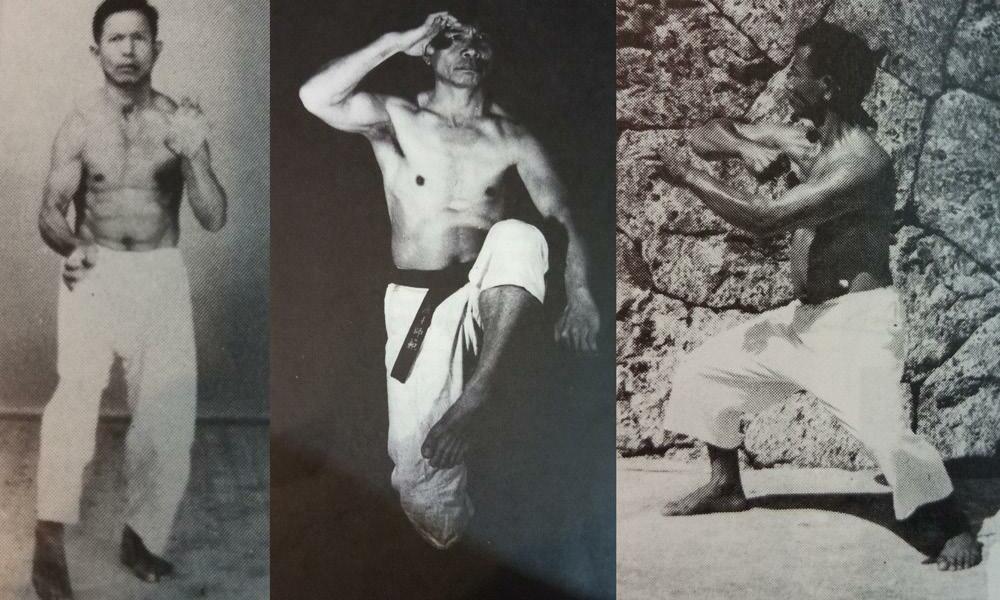
When mentioning the 100% distribution of body weight on one foot, we need to remember that the Uechi Ryu Tsuru Ashi Dachi is also different from its "cousins". While in Shorin Ryu we can see a Tsuru Ashi with the instep of one foot tucked behind the knee of the other leg, in Uechi Ryu we simply raise the "floating" leg fully, in a gesture of covering ourselves and perhaps threatening to a kick. In fact, some masters perform an ancient Seisan where they perform a sokusen geri while standing in this position.
And finally, we have two long positions that are used for very brief moments. On the one hand, we execute Zenkutsu Dachi on very few occasions, and to accompany a hit from Hiji (Empi - Elbow) vertical to the chest or armpit. And on the other, a Sue Goshi Dachi intended to accompany Hiji's forceful blows to the chest, or to get closer to the opponent's base to act on his legs. Those who are not used to reading about Uechi Ryu will wonder how Sue Goshi Dachi is executed. In the words of George Mattson Sensei: it is a “deep” or “long” Sanchin Dachi. To guide the practitioner of other styles of Karate, we can say that it is similar to Shiko Dachi but instead of looking for total symmetry, the legs are placed diagonally and the hip is rotated forward. When profiling the rear knee will move slightly inward. The idea is to allow the hip to rotate slightly to accompany the actions of the arms. For example, when executing a Furi Hiji, the hip accompanies the movement by rotating inward, but when executing a Uraken or a Shoken, the hip remains forward. We can divide broad-based actions into two: on the one hand, those that execute elbow strikes regardless of whether they are Tate (vertical) or Furi (swing), and on the other, those intended to work on the opponent's legs. What changes is the emphasis with which the base change is made. In the case of blows with the elbow, normally the weight of the body is used to provide more forcefulness to the elbow, executing the previous technique in the air (mawashi uke) and landing with the elbow in position to execute it almost like a lunge. Of course, it is not the only execution mode, but it is the one that best depicts the idea of the weight transition. When the technique accompanying a long base is not related to elbow impact, it can be done much smoother by emphasizing speed and control of the transition. In the image of Sensei Kanei Uechi executing a Hasami Uchi, it is, in principle, a technique applied to the opponent's leg. It demands specific speed, precision and execution time, something different from the crudest and most brutal idea of the previous proposal. In conclusion, for Uechi Ryu everything is Sanchin, especially when we talk about bases. In modernity, small modifications arise when executing Kata, we have modernized thanks to exchanges with the rest of Okinawan Karate. But we must keep in mind the spirit of the technique so as not to lose sight of the essence of what we do.
